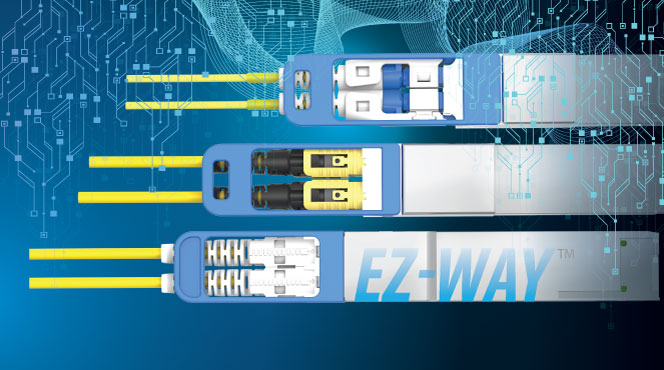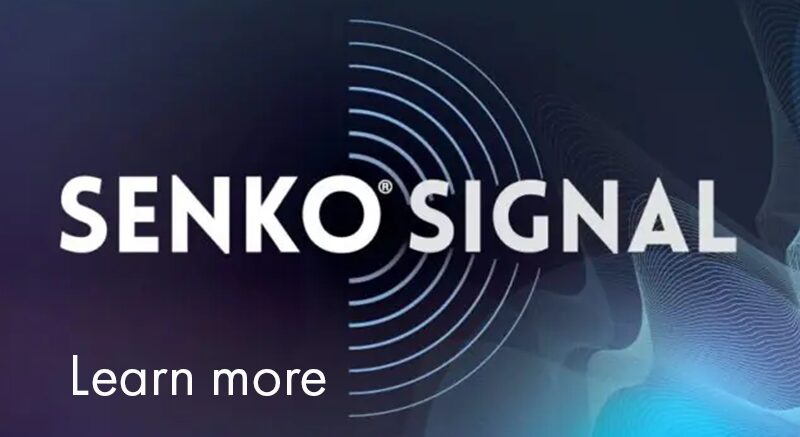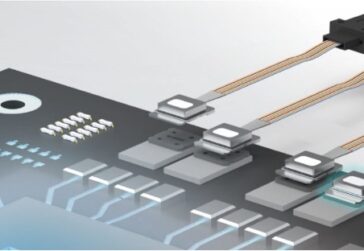Optimizing High-Density Connectivity with SENKO’s EZ-WAY™ Series Connectors
As data centers and high-performance computing environments evolve to support increasingly dense hardware configurations, the demand for compact, reliable, and easy-to-manage connectivity solutions continues to rise. One of the key challenges in these high-density applications is maintaining accessibility and serviceability when traditional fiber connectors begin to outgrow the footprint of their corresponding transceivers. One of the latest developments is the emergence of belly-to-belly transceivers as we go into the 800G transceiver market. SENKO’s EZ-WAY™ Series connectors directly address this problem with an innovative design tailored to fit within the tight transceiver constraints. The EZ-WAY™ Series connectors is available for the LC, MPO, and CS connector types, which are the most common transceiver interface connectors.
Overcoming the Footprint Challenge
In environments utilizing QSFP-DD and OSFP transceivers, traditional connectors often exceed the transceiver’s footprint. This overhang can lead to significant accessibility issues, making it difficult to mate or de-mate connectors, especially when ports are stacked closely together. Such limitations compromise not only the ease of maintenance but also overall cable management and airflow.
SENKO’s EZ-WAY™ Series is engineered with precision to stay entirely within the QSFP-DD and OSFP transceiver footprint. This crucial design feature ensures unobstructed access to adjacent ports and facilitates faster deployment and maintenance in high-density panels.

Rethinking the Push-Pull Tab
The majority of connector designs in the market are not suitable to be closely packed in a limited rack space. To improve connector density, push-pull tab mechanisms have been the go-to solution, as they allow connectors to be removed without directly accessing the connector body. However, these tabs often add to the height of the total connector assembly. In many configurations, this added bulk can once again lead to spacing conflicts. The push-pull tab design may be suitable for patch panels, but they do not fit within the QSFP-DD or OSFP transceiver footprint.
Introducing the Pullable Boot Advantage
The EZ-WAY™ Series distinguishes itself with a streamlined pullable boot design. Unlike conventional push-pull tabs, this solution minimizes the vertical profile of the connector, allowing two fully terminated connectors to fit side-by-side within the QSFP-DD and OSFP footprint. A 1RU switch generally has about 32 transceivers packed closely together which does not provide much space to access the connector housing. This compact approach enhances port density while maintaining ease of use and ergonomic access.

The pullable boot not only reduces connector height but also provides a firm and reliable grip for technicians during insertion and removal—making it ideal not only for the latest transceiver, but also top-of-rack, spine-leaf, and core switch deployments where access is often limited. In addition, the ease of access is improved with the connectors’ streamlined design, preventing accidental disconnection of adjacent connectors, particularly with high data rate connections like 800G, 1.6T, and above.
SENKO’s EZ-WAY™ Series in QSFP-DD Transceivers

SENKO’s MPO EZ-WAY™ Series on a 1RU Patch Panel
Conclusion
SENKO’s EZ-WAY™ Series connectors represent a thoughtful response to the real-world demands of high-density networking. By eliminating the space inefficiencies associated with traditional connector and tab designs, and offering a sleek, low-profile alternative that preserves accessibility and performance, the EZ-WAY™ Series empowers network operators to scale up to higher bitrate transceivers.




